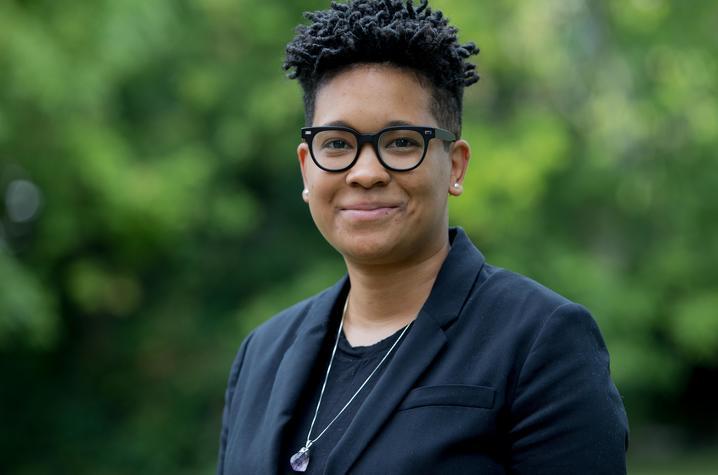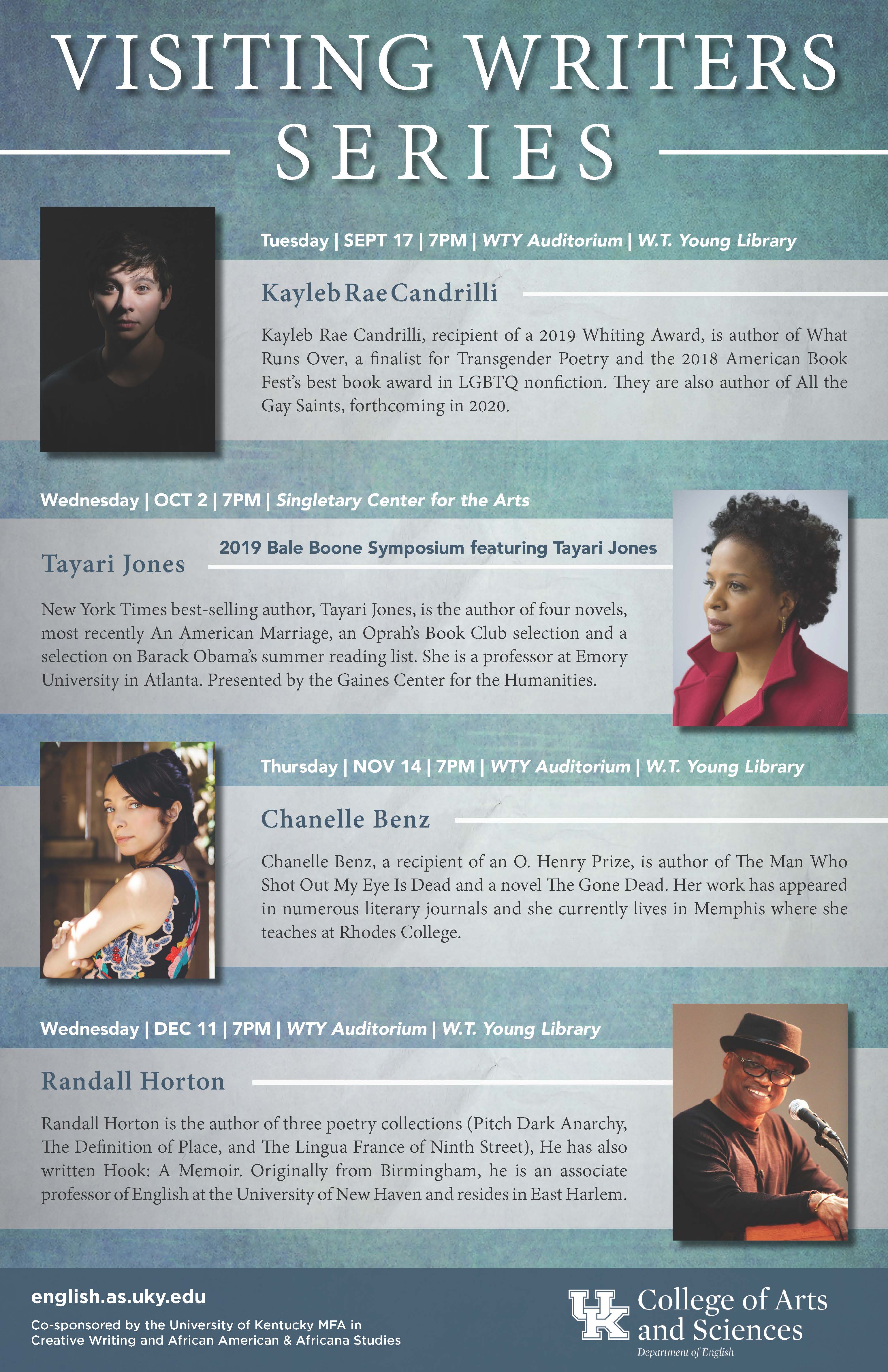The Gaines Center & Visiting Writers Series Featuring SHAYLA LAWSON & KEITH WILSON
Thursday February 6th, 2020
7:00 pm
WTY Auditorium


Shayla Lawson is the author of three books of poetry—A Speed Education in Human Being, the chapbook PANTONE and I Think I’m Ready to see Frank Ocean—and the forthcoming essay collection THIS IS MAJOR (Harper Perennial, 2020). Her work has appeared in print & online at Tin House, GRAMMA, ESPN, Salon, The Offing, Guernica, Colorado Review, Barrelhouse, and MiPOesias. She curates The Tenderness Project with Ross Gay and writes poems with Chet’la Sebree (pronounced Shayla, no relation). A MacDowell and Yaddo Artist Colony Fellow, Shayla currently serves as Writer-in-Residence and Chair of Creative Writing at Amherst College. She is also supported by the Cini Foundation of Venice, Italy, the Allen Fellowship at the New York Public Library and her Havanese, Sammy Davis Jr. Jr. She is a member of The Affrilachian Poets.
Keith S. Wilson is an Affrilachian Poet and Cave Canem fellow. He is a recipient of an NEA fellowship as well as fellowships/grants from Bread Loaf, Kenyon College, Tin House, MacDowell, Vermont Studio Center, UCross, and Millay Colony, among others. Keith serves as Assistant Poetry Editor at Four Way Review and Digital Media Editor at Obsidian Journal. His first book, Fieldnotes on Ordinary Love, was published by Copper Canyon. His work in game design includes “Once Upon a Tale,” a storytelling card game designed for Lurie Children’s Hospital of Chicago in collaboration with The Field Museum of Chicago, and alternate reality games (ARGs) for the University of Chicago. He has worked with or taught new media with Kenyon College, the Field Museum, the Adler Planetarium, and the University of Chicago.
 Today we reflect on a grim chapter in our nation's history — the beginning of a 400-year story filled with tragedy, inequality, resilience and survival.
Today we reflect on a grim chapter in our nation's history — the beginning of a 400-year story filled with tragedy, inequality, resilience and survival.



